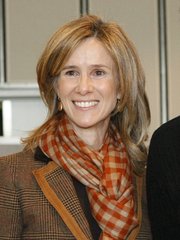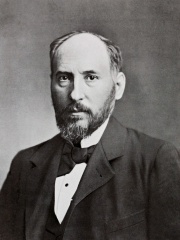
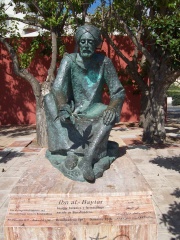
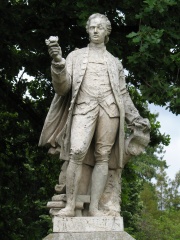
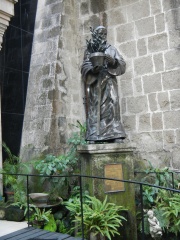
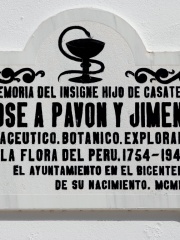
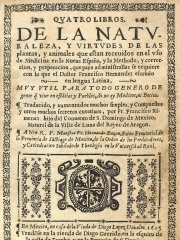
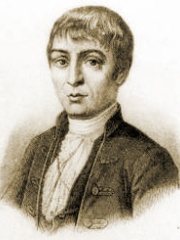
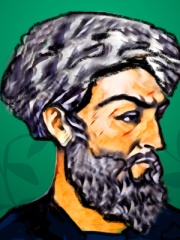
The Most Famous
BIOLOGISTS from Spain
This page contains a list of the greatest Spanish Biologists. The pantheon dataset contains 1,097 Biologists, 11 of which were born in Spain. This makes Spain the birth place of the 16th most number of Biologists behind Denmark, and Canada.
Top 10
The following people are considered by Pantheon to be the top 10 most legendary Spanish Biologists of all time. This list of famous Spanish Biologists is sorted by HPI (Historical Popularity Index), a metric that aggregates information on a biography's online popularity. Visit the rankings page to view the entire list of Spanish Biologists.

1. Santiago Ramón y Cajal (1852 - 1934)
With an HPI of 73.74, Santiago Ramón y Cajal is the most famous Spanish Biologist. His biography has been translated into 81 different languages on wikipedia.
Santiago Ramón y Cajal (Spanish: [sanˈtjaɣo raˈmon i kaˈxal]; 1 May 1852 – 17 October 1934) was a Spanish neuroscientist, pathologist, and histologist specialising in neuroanatomy, and the central nervous system. He and Camillo Golgi received the Nobel Prize in Physiology or Medicine in 1906. Ramón y Cajal was the first Spaniard to win a scientific Nobel Prize. His original investigations of the microscopic structure of the brain made him a pioneer of modern neuroscience. Hundreds of his drawings illustrating the arborization (tree-like growth) of brain cells are still in use, since the mid-20th century, for educational and training purposes.

2. Ibn al-Baitar (1197 - 1248)
With an HPI of 68.76, Ibn al-Baitar is the 2nd most famous Spanish Biologist. His biography has been translated into 38 different languages.
Diyāʾ al-Dīn Abū Muḥammad ʿAbd Allāh ibn Aḥmad al-Mālaqī, commonly known as Ibn al-Bayṭār (Arabic: ابن البيطار) (1197–1248 AD) was an Andalusian Arab physician, botanist, pharmacist and scientist. His main contribution was to systematically record the additions made by Islamic physicians in the Middle Ages, which added between 300 and 400 types of medicine to the one thousand previously known since antiquity. He was a student of Abu al-Abbas al-Nabati.

3. Antonio José Cavanilles (1745 - 1804)
With an HPI of 62.93, Antonio José Cavanilles is the 3rd most famous Spanish Biologist. His biography has been translated into 23 different languages.
Antonio José Cavanilles (16 January 1745 – 5 May 1804) was a leading Spanish taxonomic botanist, artist and one of the most important figures in the 18th century period of Enlightenment in Spain. Cavanilles is most famous for his 2-volume book on Spanish flora, published in 1795 and titled ‘Observations on the Natural History, Geography and Agriculture of the Kingdom of Valencia’.He named many plants, particularly from Oceania. He named at least 100 genera, about 54 of which were still used in 2004, including Dahlia, Calycera, Cobaea, Galphimia, and Oleandra. The standard author abbreviation Cav. is used to indicate this person as the author when citing a botanical name.

4. Francisco Manuel Blanco (1778 - 1845)
With an HPI of 61.03, Francisco Manuel Blanco is the 4th most famous Spanish Biologist. His biography has been translated into 18 different languages.
Manuel María Blanco Ramos known as Manuel Blanco (1779 – 1845) was a Spanish friar and botanist.
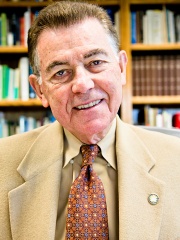
5. Francisco J. Ayala (1934 - 2023)
With an HPI of 58.95, Francisco J. Ayala is the 5th most famous Spanish Biologist. His biography has been translated into 26 different languages.
Francisco José Ayala Pereda (March 12, 1934 – March 3, 2023) was a Spanish-American evolutionary biologist and philosopher who was a longtime faculty member at the University of California, Irvine, and University of California, Davis. Ayala was previously president and chairman of the board of the American Association for the Advancement of Science. At University of California, Irvine, his academic appointments included University Professor and Donald Bren Professor of Biological Sciences, Ecology & Evolutionary Biology (School of Biological Sciences), Professor of Philosophy (School of Humanities), and Professor of Logic and the Philosophy of Science (School of Social Sciences). Ayala's employment at UC Irvine ended in 2018 after the university issued a report relating to allegations of sexual harassment claims against him. Ayala denied having "intentionally caused sexual harassment to anybody." His name was removed from the School of Biological Sciences, the Science Library, as well as various graduate fellowships, scholarship programs, and endowed chairs.

6. José Antonio Pavón Jiménez (1754 - 1840)
With an HPI of 58.34, José Antonio Pavón Jiménez is the 6th most famous Spanish Biologist. His biography has been translated into 16 different languages.
José Antonio Pavón Jiménez or José Antonio Pavón (April 22, 1754 in Casatejada, Cáceres, Spain – 1840 in Madrid) was a Spanish botanist known for researching the flora of Peru and Chile.

7. Francisco Hernández de Toledo (1515 - 1587)
With an HPI of 58.18, Francisco Hernández de Toledo is the 7th most famous Spanish Biologist. His biography has been translated into 18 different languages.
Francisco Hernández de Toledo (c. 1515 – 28 January 1587) was a naturalist and court physician to Philip II of Spain. He was among the first wave of Spanish Renaissance physicians practicing according to the revived principles formulated by Hippocrates, Galen and Avicenna. Francisco Hernández was born at La Puebla de Montalbán in the Province of Toledo, probably around 1515. Nothing is known of his parents or other family. His original surname was Fernando which he changed to Hernando in 1570 and then changed again to Hernández, the name he used until his death in 1587. In 1530 he began to study medicine at the University of Alcalá and received a bachelor's degree in 1536. After graduation, Hernández served as physician to the Duke of Maqueda in Toledo and later practiced medicine in Seville where he married Juana Díaz with whom he had two children, Juan Hernández and María of Sotomayor. From 1556 to 1560 Hernández served as a physician at the Hospital y Monasterio de Guadalupe in Extremadura, where he managed the botanical garden and took part in the anatomical dissections with Francisco Miró. In 1560 he moved to Toledo and for a short time practiced medicine at the Hospital de la Santa Cruz. While in Toledo, he travelled frequently to the royal court in Madrid where he became acquainted with the noted anatomist, Andreas Vesalius. During this time, Hernández also became a prolific writer, penning commentaries on Galen and Hippocrates, and undertaking an ambitious translation of Pliny's Natural History. In 1567 Hernández became a personal physician to King Philip II.

8. Hipólito Ruiz López (1754 - 1816)
With an HPI of 58.16, Hipólito Ruiz López is the 8th most famous Spanish Biologist. His biography has been translated into 18 different languages.
Hipólito Ruiz López (August 8, 1754 in Belorado, Burgos, Spain – 1816 in Madrid), or Hipólito Ruiz, was a Spanish botanist known for researching the floras of Peru and Chile during an expedition under Carlos III from 1777 to 1788. During the reign of Carlos III, three major botanical expeditions were sent to the New World; Ruiz and José Antonio Pavón Jiménez were the botanists for the first of these expeditions, to Peru and Chile.

9. Abu al-Abbas al-Nabati (1166 - 1239)
With an HPI of 57.76, Abu al-Abbas al-Nabati is the 9th most famous Spanish Biologist. His biography has been translated into 15 different languages.
Ahmad bin Muhammad bin Mufarraj bin Ani al-Khalil (fl. c. 1200), better known as Abu al-Abbas al-Nabati, Ibn al-Rumiya or al-Ashshab, (Arabic: أبو العباس النباتي, Abu’l-ʿAbbās al-Nabātī), was an Andalusian scientist, botanist, pharmacist and theologian. He was a teacher of fellow Andalusian botanist Ibn al-Baitar.

10. Ángel Cabrera (1879 - 1960)
With an HPI of 55.37, Ángel Cabrera is the 10th most famous Spanish Biologist. His biography has been translated into 17 different languages.
Ángel Cabrera (19 February 1879 – 8 July 1960) was a Spanish zoologist. He was born in Madrid and studied at the Universidad Central, Madrid (now part of the Universidad Complutense de Madrid). He worked the National Museum of Natural Sciences from 1902, going on several collecting expeditions to Morocco. In 1907, he proposed that the Iberian wolf was a separate subspecies, which he named Canis lupus signatus. In 1925 Cabrera went to Argentina and remained there for the rest of his life. He was head of the Department of Vertebrate Paleontology at the Museo de La Plata, and made collecting trips to Patagonia and Catamarca. In Patagonia he discovered the first Jurassic dinosaur of South America; he thus began a series of discoveries in this region, one of the richest in dinosaur remains. He supervised the doctoral work of some of the first palaeontologists of South America, including Mathilde Dolgopol de Sáez and Dolores López Aranguren. His son Ángel Lulio Cabrera was a distinguished Argentinian botanist.
People
Pantheon has 11 people classified as Spanish biologists born between 1166 and 1962. Of these 11, 1 (9.09%) of them are still alive today. The most famous living Spanish biologists include Cristina Garmendia. The most famous deceased Spanish biologists include Santiago Ramón y Cajal, Ibn al-Baitar, and Antonio José Cavanilles. As of April 2024, 1 new Spanish biologists have been added to Pantheon including Cristina Garmendia.
Living Spanish Biologists
Go to all RankingsDeceased Spanish Biologists
Go to all RankingsSantiago Ramón y Cajal
1852 - 1934
HPI: 73.74
Ibn al-Baitar
1197 - 1248
HPI: 68.76
Antonio José Cavanilles
1745 - 1804
HPI: 62.93
Francisco Manuel Blanco
1778 - 1845
HPI: 61.03
Francisco J. Ayala
1934 - 2023
HPI: 58.95
José Antonio Pavón Jiménez
1754 - 1840
HPI: 58.34
Francisco Hernández de Toledo
1515 - 1587
HPI: 58.18
Hipólito Ruiz López
1754 - 1816
HPI: 58.16
Abu al-Abbas al-Nabati
1166 - 1239
HPI: 57.76
Ángel Cabrera
1879 - 1960
HPI: 55.37
Newly Added Spanish Biologists (2025)
Go to all RankingsOverlapping Lives
Which Biologists were alive at the same time? This visualization shows the lifespans of the 7 most globally memorable Biologists since 1700.

